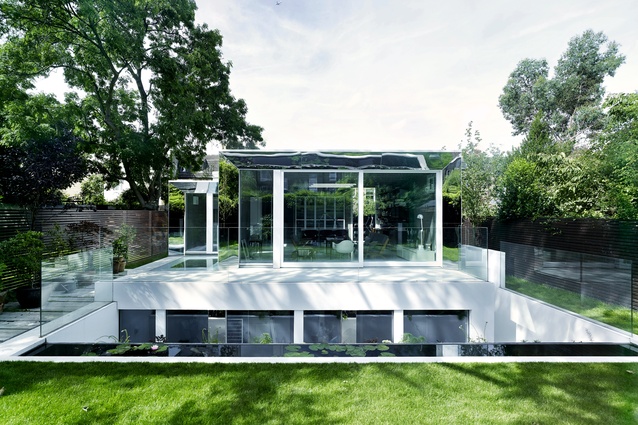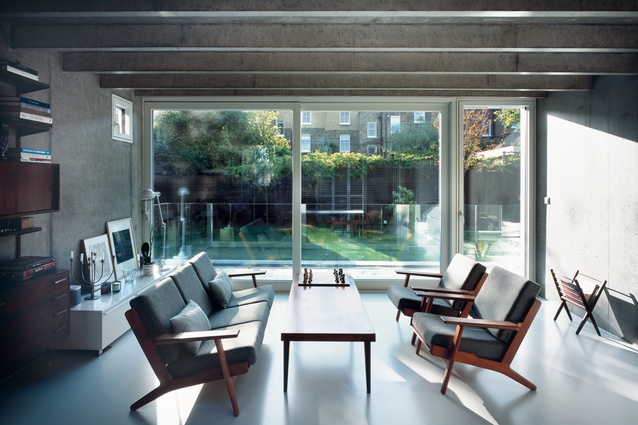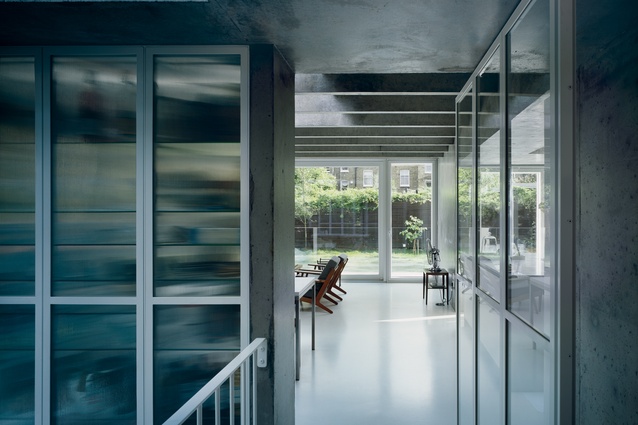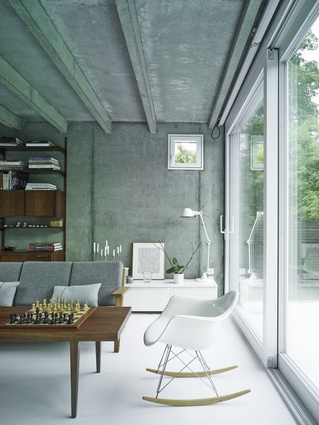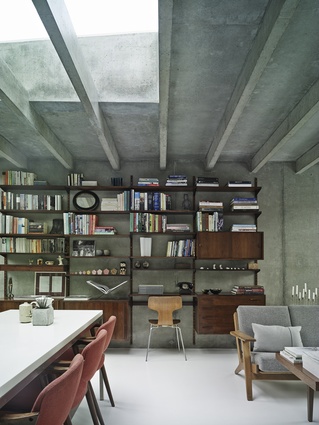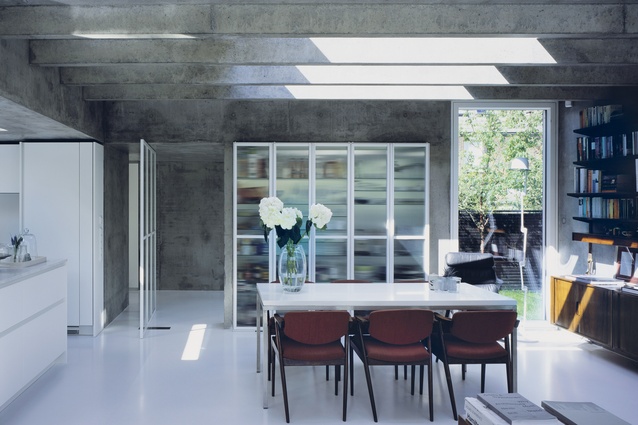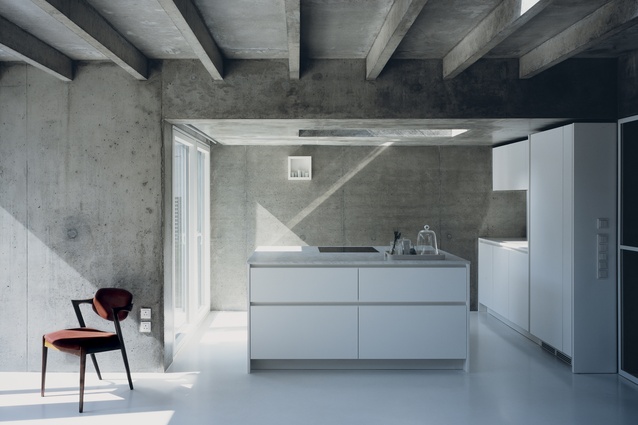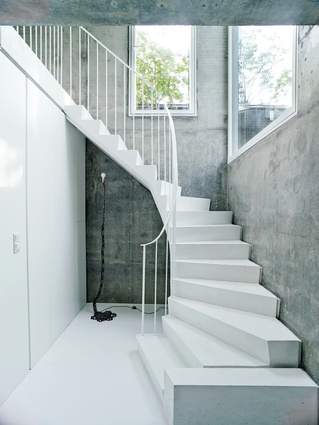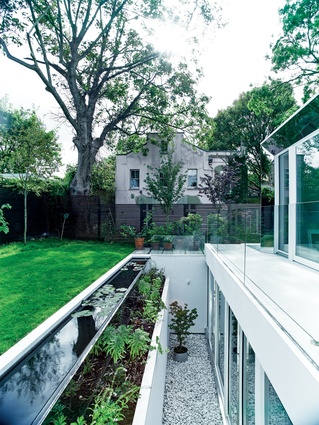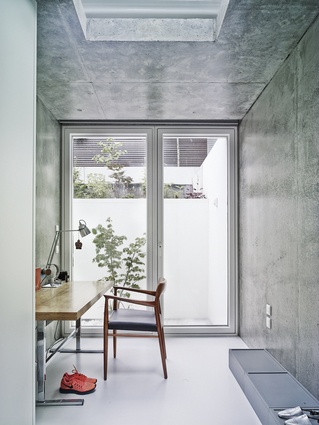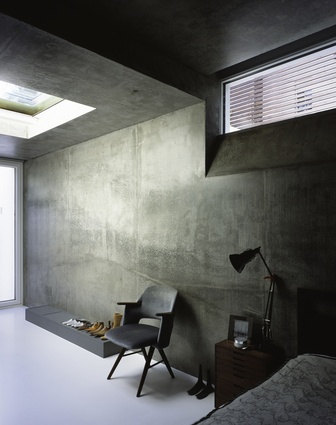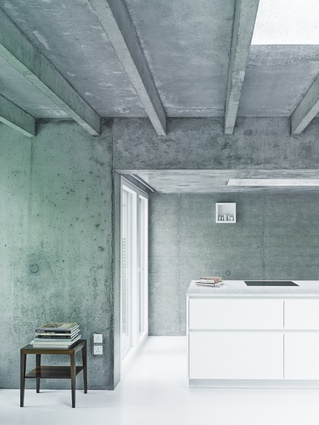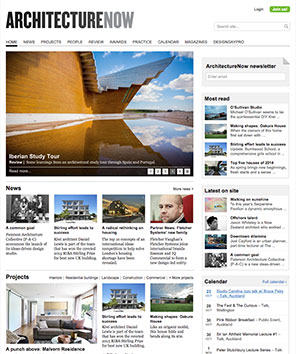Underground cool
Deborah Saunt and David Hills spent a considerable amount of time looking for the perfect location to build their family home. The couple, founding directors at London-based multi-disciplinary architecture studio DSDHA, finally found it in a backland site in Clapham Old Town, three kilometres from the capital’s West End. Hidden from street view behind a row of terraces, the block boasts mature trees and lush gardens, and is about as quiet and secluded as it can get, this close to London’s historic centre. Yet with the idyllic pastoral setting and desired sense of privacy came strict planning restrictions.
Rather than be deterred by unavoidable Conservation Area regulations, Saunt and Hills remained philosophical during the lengthy approvals process. “David and I weren’t only able to interrogate the idea of the ‘domestic’ and what that means now, but at a strategic urban level we also asked how a global city like London might provide new housing within its fiercely defended low-density backlands,” says Saunt.
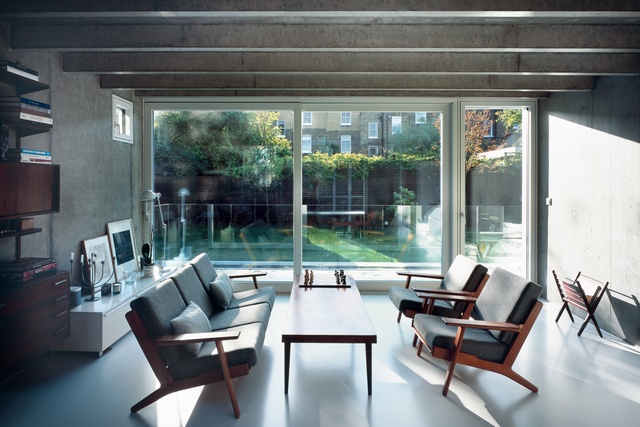
Their resulting design responds ingeniously to the area’s setback laws and presents as a modestly-sized pavilion generously removed from the site’s boundaries. However, Saunt and Hills’ most dynamic response slyly accommodates the single-storey height restrictions, while actually comprising two levels. The architects essentially built into the ground so the first level is sunken, hidden from view and only revealed at close distance. It’s a well-mannered solution that informs the upper level’s configuration and complements effectively Saunt and Hills’ respectful attempts to visually minimise as much of the 135m2 home’s structure as possible.
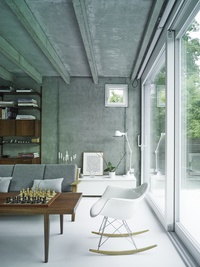
A rectangular plan is thoughtfully spliced with a series of light-wells to allow for even light penetration throughout the subterranean level. Saunt and Hills have negated the need for corridors, heightening the spatiality by arranging the master bedroom and two children’s bedrooms around a central living space. While oversized windows aid in distributing natural light too, a white concrete stair within a double-height stairwell adds sculptural flourish and connects both levels. Upstairs, the kitchen, dining and lounge areas are open plan and extend through to a terrace that overlooks the one below. Like the stairs, the kitchen cabinetry, fixtures and resin flooring are also white – a crisp accent reiterated in the exterior’s render.
Saunt and Hills treat this ‘whiteness’ as a secondary material in a predominantly concrete palette. It contrasts with the moody grey tones and serves to brighten the interior, which could otherwise have appeared dark and uninviting. As Saunt explains, “By deploying a limited material palette, we wanted to create a sense of domesticity. And the ‘whiteness’ represented as a finish beyond the concrete surfaces brings a feeling of unexpected delight and animation indoors.”
High ceilings and skylights ensure the interior is also neither gloomy nor oppressive, despite its concrete walls and ceiling. But what’s most crucial in injecting the overall scheme with lightness is the chamfered mirrored window and door reveals, which engage the white finishes in a lively interplay of reflections. “The light bounces around internally at surprising angles and even more so when it hits another mirrored surface,” says Saunt. Externally the garden, lap pool and sky are brilliantly reflected in the window and door reveals, which serves to dissolve the edges of the upper level, making it politely ‘disappear’ into its surrounds.
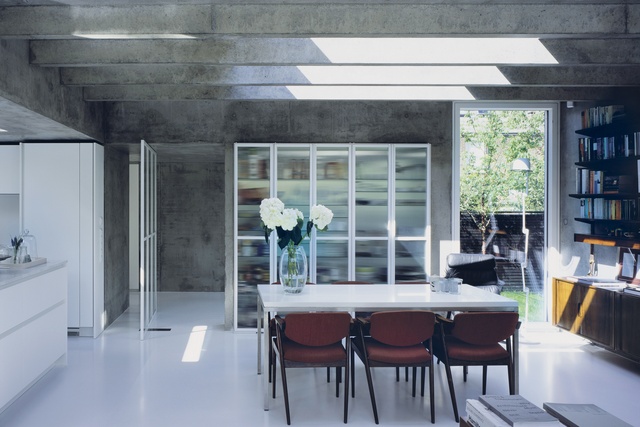
The effect is somewhat cool and slightly kaleidoscopic, but it’s in stark contrast to the interior’s cocoon-like ambience. Concrete is utilitarian by nature and Saunt and Hills have softened its appearance with timber furniture, featuring upholstery in dove grey and shades of autumnal colours. It adds warmth to the living spaces and bedrooms, as does the full-height floating shelving system in the dining area.
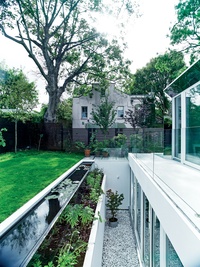
Saunt and Hills’ many books, objects and personal effects are neatly displayed and make for a compelling visual reminder that this is a home to be lived in. Along with other decorative elements throughout the interior (lamps, potted plants and even pairs of shoes lined up for all to see), they reiterate a sense of domesticity through their small scale. This element of detail complements the design’s bold expression and prevents the home from looking like a showroom, which can often be the case with residences of spare materiality. Saunt and Hills have intelligently reconciled an urban puzzle, without compromising on architectural integrity, to create an oasis for their family that’s as stylish as it is homely.

